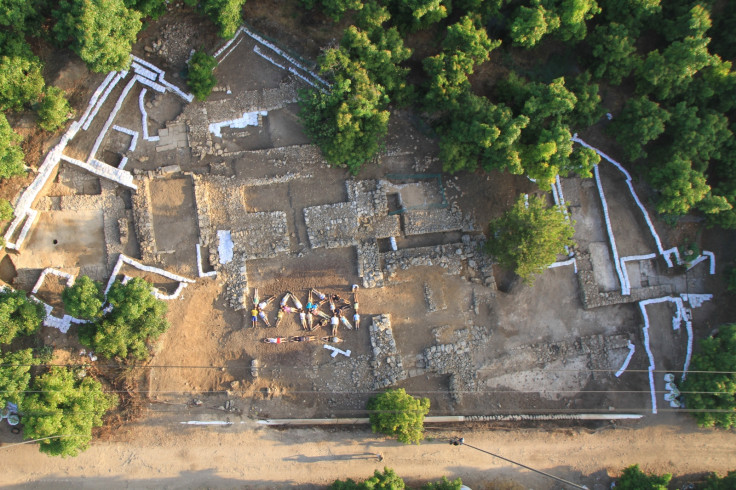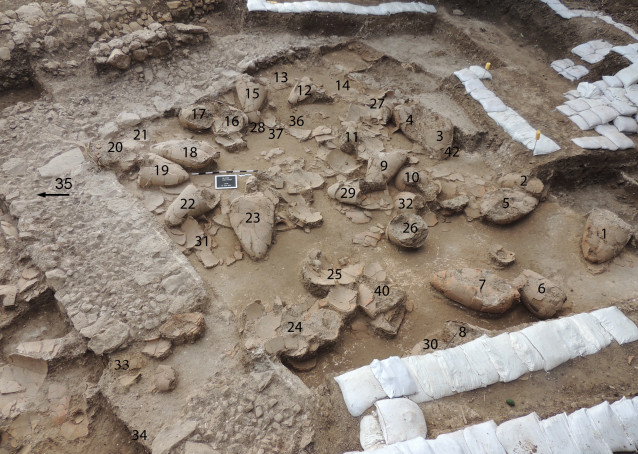Bronze Age Wine Cellar Discovery in Middle East: Proof Canaanites Were Big on Alcohol Production

Archaeologists discovered the remains of a wine cellar, complete with 40 large storage vessels that contained traces of alcohol, while excavating the Bronze Age Canaanite palace in Tel Kabri in Israel, a new study has revealed.
The team, comprising researchers from universities in Israel and the US, stated that it was the largest and oldest palatial wine cellar ever to be found in the Ancient Near East.
The study, Characterizing a Middle Bronze Palatial Wine Cellar from Tel Kabri, Israel, was published in open-access journal Plos One and was the collaborative effort of researchers from Brandeis University, University of Haifa and the George Washington University.
They believe the discovery has led to a far better understanding of Bronze Age viticulture - the study of making wine from grapes - and the Canaanite's ancient palatial economy.
"The wine cellar and its particular features support our understanding of wine in ancient society to a high level of specificity," Andrew Koh, the paper's lead author and an assistant professor from the department of classical studies at Brandeis University, told IBTimes UK.
The Canaanites were an agricultural and urban people, native to the ancient Levant region (modern Israel, Palestine, Transjordan, Lebanon and coastal Syria), who used a Semitic language similar to Hebrew.
It is also believed they invented the Proto-Canaanite alphabet, which evolved to become the modern day Latin alphabet used in Western civilisation.
The palace in Tel Kabri covers 200 acres and is not open to the public. It has existed since Pottery Neolithic times (roughly about 6,400 BC) and Minoan-style frescos have been discovered there.

In previous studies, there have been clues - such as the discovery of wine goblets and jars marked with the word for wine - to make archaeologists believe alcohol was drunk during special occasions and celebrations.
However, until now, the archaeological evidence had been too sparse or sporadic to support the theory that wine production, distribution and consumption played a big part in the lives of those living in the Mediterranean and Near East region, during that period.
Even though the wine has since dried up, comprehensive samples from each container were taken for organic analysis and found by the archaeologists to have chemical compounds inside them characteristic of wine. Among the ingredients found were honey, cinnamon, mint and cedar oil.
For the archaeologists, the scientific analysis of such a complete wine cellar within a closed deposit has enabled them to ask archaeological questions that were previously impossible to answer.
Through the amount of evidence present, the archaeologists are able to give a clear estimate of palace life and how wine played a part in it.
"We are more certain than ever that Kabri functioned as an oikos, or large household, economy. There was a king or central figure that invested in what was an expensive commodity for elites, wine, to demonstrate his power, authority, and prestige," said Koh.
Research has also suggested that there was a wine specialist or group of specialists located in the palace who were in charge of making the wine before it was consumed in the banqueting hall.
Koh added: "It wasn't a matter of just transporting the wine from the vineyards and serving it up. This was a time-consuming and well thought out endeavour showing the importance of feasting and wine for whoever was in charge to maintain and exert his authority."
© Copyright IBTimes 2025. All rights reserved.




















